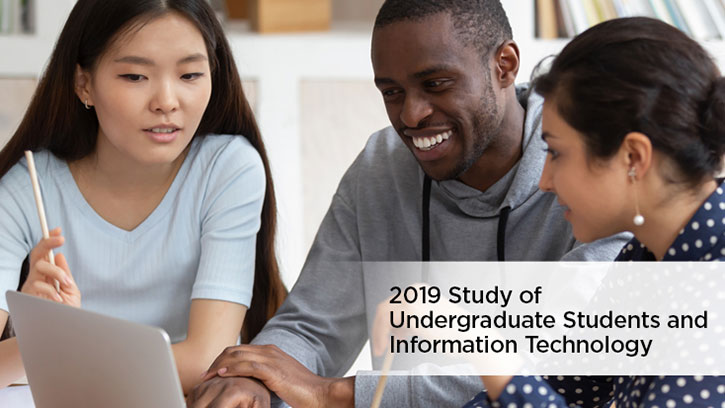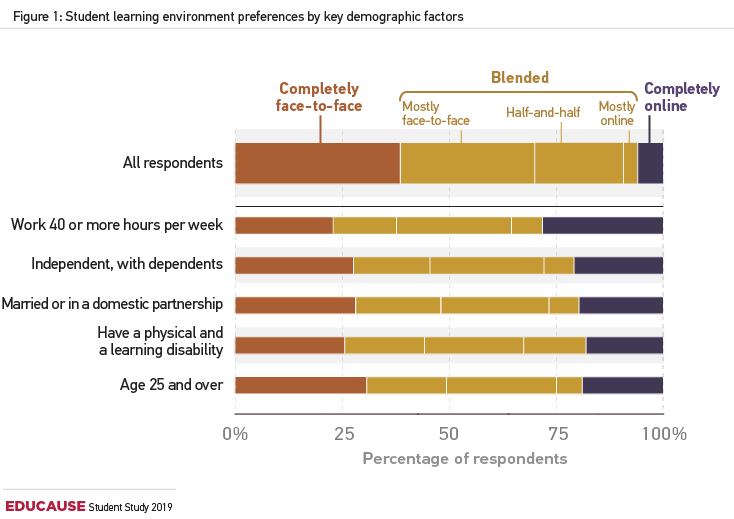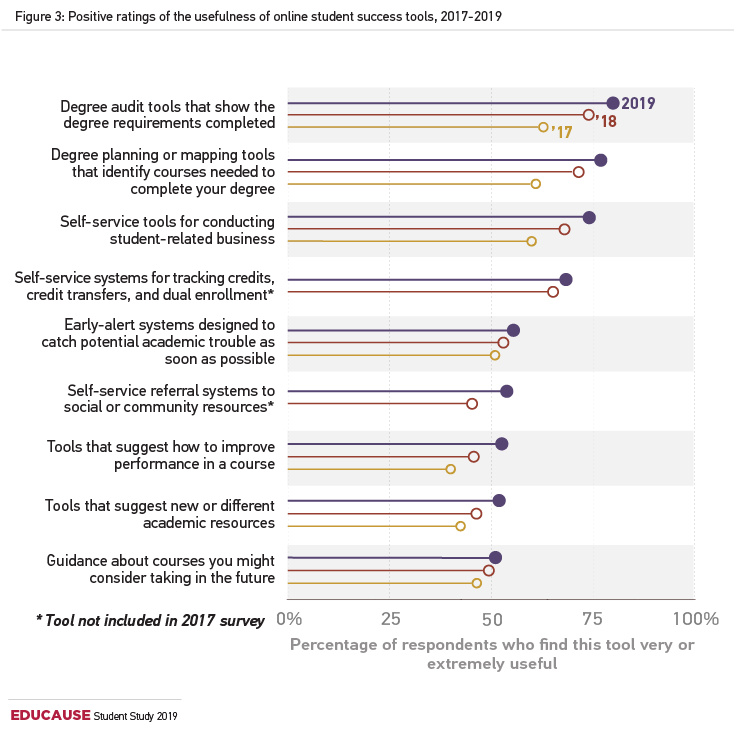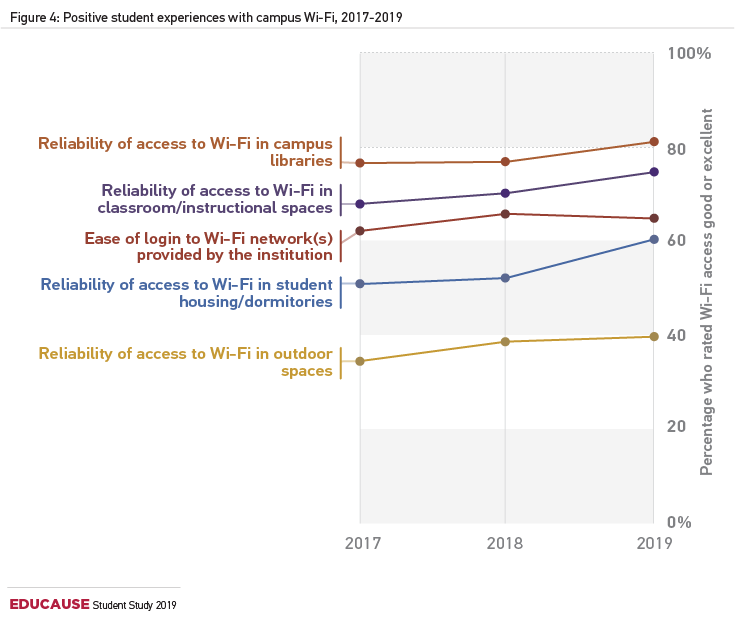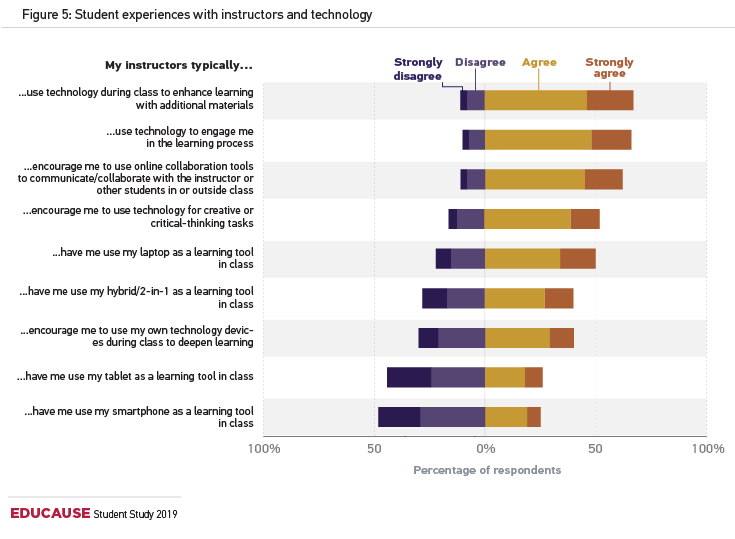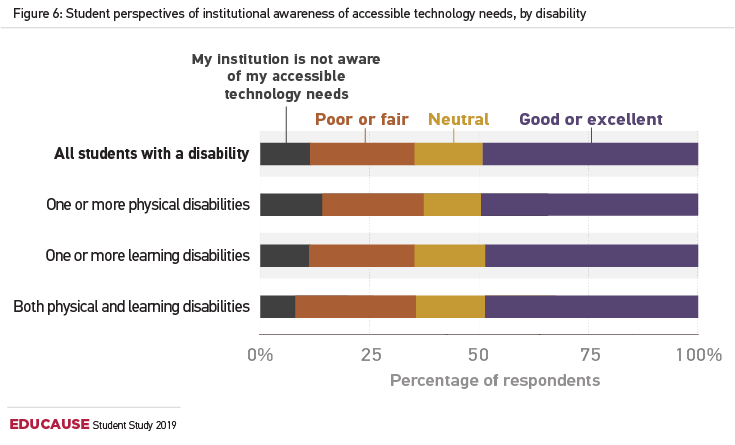2019 Study of Undergraduate Students and Information Technology
This study presents important findings from EDUCAUSE's 2019 research on students and information technology. It also provides technology and higher education leaders with recommendations for addressing students' most pressing technology support and solution needs, with the goal of enriching students' learning experiences on campus and helping to advance student success.
Read full report: PDF | HTML | Other materials
Key Findings
Drawing on survey data from more than 40,000 students across 118 US institutions, this report highlights a number of important findings related to students' technology preferences, supports, and experiences, with the goal of aiding technology and higher education professionals in improving student learning experiences and success.
Learning Environment Preferences
While the majority of students (70%) prefer mostly or completely face-to-face learning environments, specific demographic factors influence these preferences. Read more about learning environment preferences >
Face-to-Face Activities
Labs and demonstrations, faculty/student conferences, and lectures were rated as the most preferred activities in completely face-to-face environments. Read more about face-to-face activities>
Student Success Tools
For the students who use them, online success tools have become increasingly useful in navigating their college experience. Read more about student success tools >
Technology Experiences
Dormitories/campus housing and outdoor spaces continue to be rated at the bottom when it comes to reliable Wi-Fi. Read more about experiences with W-Fi >
Technology Use in the Classroom
Two-thirds of students agreed that their instructors use technology to engage them in class, but it is not always with the devices students already own. Read more about technology use in the classroom >
Accessibility
Only half of the students who have physical and/or learning disabilities and who need accessible technologies or accommodations rated their institution’s support positively. Read more about accessibility >
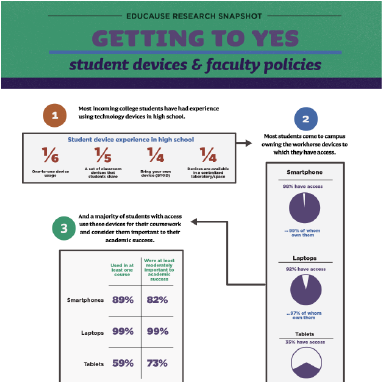
Infographic
Download the 2019 student and faculty infographic now.
Reports and Supporting Materials
Get Involved and Get Data
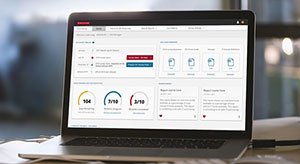
Sign up for the 2020 student survey—there's no fee and you gain access to data for your institution and peers. 2019 survey participants can access data now in the ETRAC Portal.
